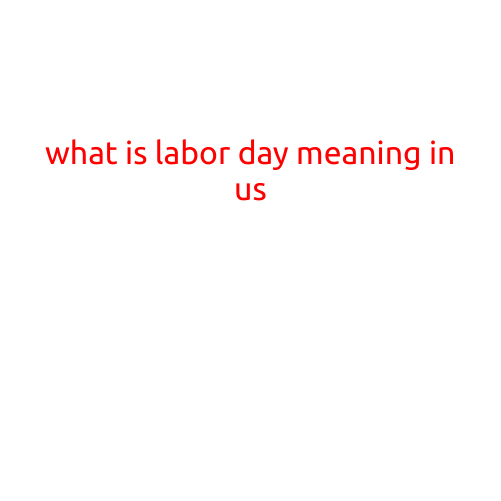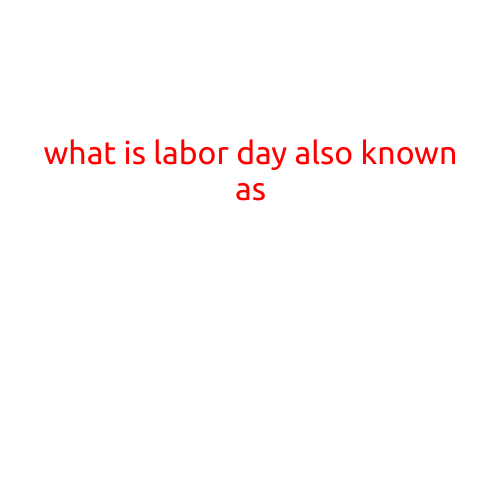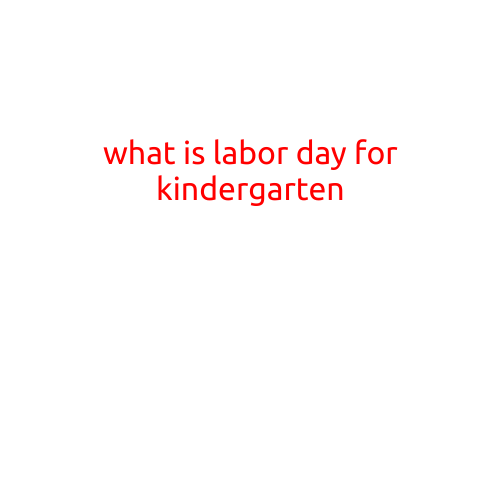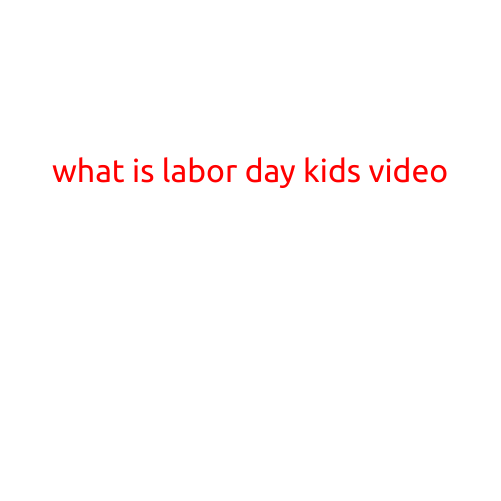
What is Labor Day Meaning in the US?
Labor Day is a federal holiday in the United States that is celebrated on the first Monday in September. It is a public holiday that honors the working class and the labor movement, which has played a significant role in shaping the country’s history and economy. In this article, we will explore the meaning and significance of Labor Day in the US.
Origin of Labor Day
Labor Day has its roots in the late 19th century, when the Industrial Revolution was transforming the US economy. As factories and industries grew, workers began to form labor unions and demand better working conditions, higher wages, and shorter working hours. In the 1880s, labor strikes and protests became increasingly common, particularly in the mining, railroad, and textile industries.
In response to the growing labor movement, the International Labor Union, a coalition of labor unions, proposed a national holiday to honor the working class. The idea of Labor Day gained momentum, and on September 5, 1882, the first Labor Day was celebrated in New York City. The holiday was initially observed on Tuesday, but in 1884, the first Monday in September was designated as Labor Day.
What is Labor Day Meant to Achieve?
Labor Day is meant to recognize the contributions and achievements of American workers, who have played a crucial role in building the country’s economy and society. The holiday is intended to:
- Celebrate the labor movement: Labor Day honors the struggles and sacrifices of workers who fought for better working conditions, fair wages, and social justice.
- Acknowledge the importance of labor: The holiday recognizes the vital role that labor plays in the economy, acknowledging that workers are the backbone of the country’s prosperity.
- Foster a sense of community: Labor Day is meant to bring people together, promoting community and social bonding among Americans from all walks of life.
- Mark the end of summer: Labor Day is often seen as the unofficial end of summer, signaling the return to school and the beginning of the new academic year.
Traditions and Celebrations
While Labor Day is a federal holiday, it is observed differently across the country. Some common traditions and celebrations include:
- Parades and marches: Many cities and towns host Labor Day parades, marches, and rallies, featuring floats, marching bands, and labor unions.
- Barbecues and picnics: Labor Day is a popular time for outdoor gatherings, with many families and friends hosting barbecues, picnics, and backyard parties.
- Travel and vacation: The long weekend preceding Labor Day is a popular time for vacations, with many Americans taking advantage of the extra day off to travel, relax, or engage in outdoor activities.
- Fireworks and music: Some cities and towns host Labor Day fireworks displays, concerts, and festivals, marking the official end of summer.
Conclusion
Labor Day is a significant holiday in the United States, representing a celebration of American workers and the labor movement. From its roots in the late 19th century to the present day, Labor Day continues to honor the struggles and achievements of workers, acknowledging their vital role in shaping the country’s economy and society. Whether through parades, barbecues, or relaxing with family and friends, Labor Day is a time for Americans to come together and mark the end of summer in style.





